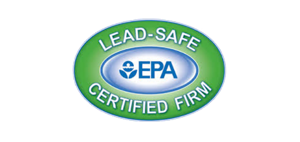Imagine your home suddenly becoming an indoor pool. This could happen due to flooding, leaks, or burst pipes. Water damage is a nightmare for homeowners. It’s important to act fast and effectively to avoid lasting damage.
Knowing the first steps and when to call experts is key. This guide will help you through the recovery process. With flooding becoming more common, learning how to prevent it is crucial. Are you ready to learn how to protect your home and restore it?
Understanding the Causes of Water Damage
It’s important to know why water damage happens to fix it right. Severe weather like hurricanes and heavy rain can flood homes. This is because the water system can’t handle the amount of water, causing damage.
Water damage also comes from inside homes. Leaky pipes can cause water to leak into walls and floors. It’s key to find and fix these leaks quickly to avoid more damage.
Roof leaks are another big problem. Issues like damaged shingles or clogged gutters let rainwater in. This can lead to water dripping into the attic or walls, causing big problems if not fixed fast.
Appliances like washing machines or water heaters can also cause water damage. These problems can happen suddenly, so it’s important to act fast to prevent more damage.
Knowing where water damage comes from is the first step to fixing it. Whether it’s from outside or inside, understanding the cause helps homeowners protect their homes.
Immediate Steps to Take When Water Damage Occurs
When water damage happens, it’s important to act fast. First, try to stop the water source if you can. This could mean closing water valves or using other emergency tips to prevent more flooding.
- Ensure Safety First: Make sure to turn off electricity and wear protective gear like rubber gloves and boots. This is to avoid electrical hazards.
- Salvage and Protect Valuables: Start by saving important things like documents, electronics, and sentimental items. Move them to a safe, dry place.
- Document the Damage: Take photos and videos of the damaged areas. This will be key for insurance claims and tracking progress.
- Initiate the Drying Process: Use fans, dehumidifiers, and open windows to dry the area. This is crucial to prevent mold and further damage.
These steps can greatly help your home recover. Always prioritize safety and use these tips to protect your property and belongings.
Assessing the Extent of Water Damage
It’s key to do a good water damage check to fix things right. Start by looking at walls, floors, and ceilings for damage. Signs like discoloration, warping, or a musty smell mean there might be hidden moisture.
Using tools like moisture meters and infrared cameras is a big help. They show where water is hiding behind walls and under floors. This helps you plan how to fix things better.
Even if you think you’ve seen all the damage, getting a pro’s opinion is smart. They can spot things like mold and weak spots in the structure. This ensures your home gets fixed right and stays safe.
Checking for water damage is more than just finding immediate problems. Mold can grow fast after flooding, which is bad for your health and can damage your home more. So, getting a detailed check quickly is important to keep your home safe.
- Inspect visible areas for discoloration, warping, or musty odors.
- Utilize moisture detection tools to locate hidden water issues.
- Seek professional assessments for a comprehensive evaluation.
- Consider potential long-term impacts such as mold growth and structural damage.
Hiring Professional Water Damage Restoration Services
When water damage happens, getting help from experts is key. It’s important to choose certified specialists to avoid more damage or health risks. They know how to fix the problem right.
Restoration companies do many things, like:
- Water extraction
- Dehumidification
- Mold remediation
These services are crucial to fix water damage and stop future problems. Experts have the right tools and knowledge for tough cases. They can handle contaminated water or structural damage well.
The fixing process has several steps:
- Inspection and assessment
- Water removal (extraction)
- Drying and dehumidification
- Cleaning and sanitizing
- Restoration and repair
Homeowners will get updates and clear talks during the work. The goal is to get the property back to normal fast and well.
DIY Water Damage Restoration Steps
Dealing with minor water damage yourself can save money and time. Here are key steps for DIY water damage repair:
- Turn Off the Water Source: First, stop the water flow. This might mean turning off the main water valve for big leaks or fixing appliance problems.
- Remove Standing Water: Use a wet/dry vacuum or buckets to get rid of as much water as you can. For small pools, a mop works well.
- Dry Out the Affected Area: High-powered fans and dehumidifiers are key. Open windows and doors to help air out and dry faster. Aim to dry everything within 24-48 hours to avoid mold.
- Clean and Sanitize: Clean all surfaces touched by water. Mix water and bleach or use a commercial disinfectant. Focus on floors and walls to stop mold and mildew.
- Remove Damaged Materials: If carpets, drywall, or insulation are wet, they must go. Wet materials can hide mold spores, so dispose of them properly.
- Monitor for Mold: Keep an eye out for mold even after drying. Use mild water damage solutions like mold-resistant products to protect your home.
These home restoration tips help with mild to moderate damage. But, serious damage needs a pro. Knowing when to call for help can keep you and your home safe.
Preventing Future Water Damage
Keeping your home safe from water damage is key. Regular home maintenance helps spot problems early. This way, you avoid expensive fixes and prevent long-term harm.
Waterproofing is a smart move. It means sealing foundation cracks, fixing the roof, and protecting basements. These steps are vital in lowering flood risk during storms or disasters.
Don’t forget about cleaning gutters and drainage systems. Clogged gutters can lead to water damage. So, clean them often and check your drainage to keep your home safe.
Using new tech can also help. Water detection systems in basements alert you to leaks early. They work with smart home tech for constant monitoring.
Having a disaster plan is also crucial. Know your flood zones and risks. Make a plan with evacuation routes and safety steps for your family.
Lastly, check your insurance. Make sure it covers water damage, especially if you live in a flood area. Talk to your agent to see what’s covered and if you need more.
- Inspect pipes and appliances regularly.
- Clean gutters and maintain drainage systems.
- Waterproof basements and reinforce roofing.
- Install water detection systems.
- Create a disaster preparedness plan.
- Ensure comprehensive insurance coverage.
By following these steps, you can greatly lower the risk of water damage. Your home will be safer from future problems.
Conclusion
Recovering from water damage needs a full plan. This includes quick action, expert help, and steps to prevent it. Knowing why water damage happens is key. It helps you act fast when it does.
It’s vital to quickly see how bad the damage is. This tells you how to fix it right. Getting help from water damage experts is smart. They use special tools and know-how.
For small problems, you might fix it yourself. But big damage needs pros. Knowing when to call for help keeps your home safe and sound.
Stopping water damage before it starts is important too. Regular checks and knowing risks help a lot. Being proactive protects your home and saves money on repairs.
Working to fix water damage means making your home safe again. This approach keeps your home and family safe for years to come.






